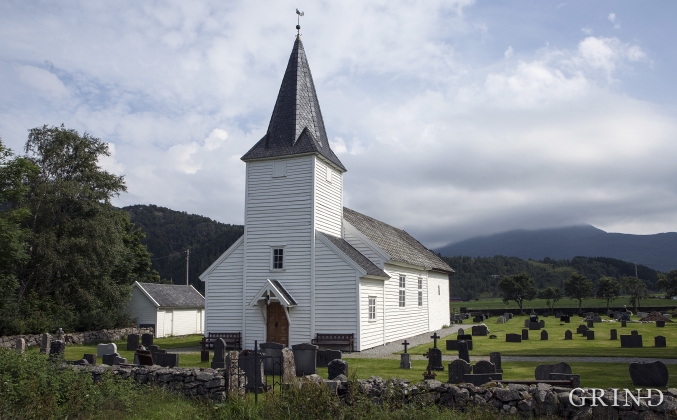Published: 08.01.2013 | Author: Nils Georg Brekke, Hans Emil Lidén
The nave in the church from the Middle Ages form the chancel in the present church building, while the original chancel today is fitted out as a sacristy. The Stødle clan diminished during the Middle Ages and the church now served only as a parish church. The population increased in the Støle parishes, and in the first half of the 17th century a new timber nave was built. The great storm in 1673 also did a lot of damage at Støle. The church underwent a major restoration in 1698-1700 and had its interior painted in colourful baroque. The west tower, which replaced an older tower, was built in the 1700s. In the Middle Ages the church was called Christ’s church. Støle is still the main church in Etne today. Towards the end of the 1800s the church interior was painted over, but the old décor was restored to its original in 1957.
On the north wall, west of the portal, we may see weak traces of a fresco from the Middle Ages. On the north wall there are also parts of a catechism piece from 1636. The walls in the nave are decorated with drapery, vines and apostolic figures. The pulpit, from the first half of the 1600s, is richly decorated with embossed ornamentation: “Hermes” and “caryatides”. The gallery front in the west has a depiction of the five wise and the five bad virgins; a key pictorial message within church décor during the Reformation.



